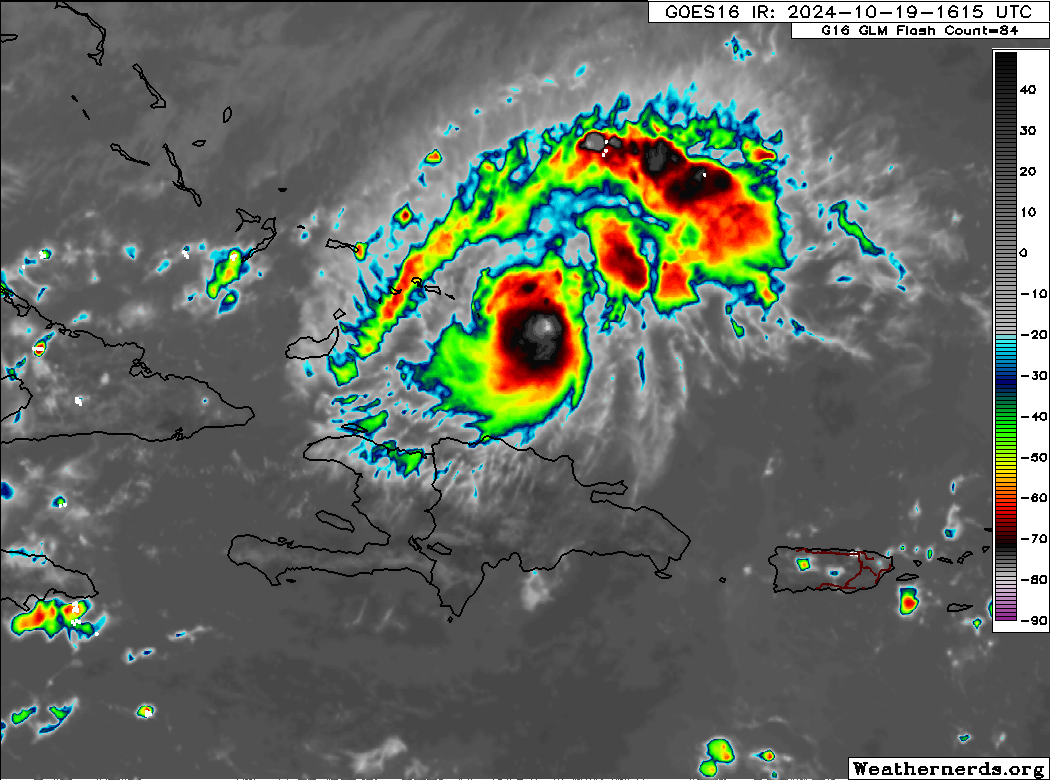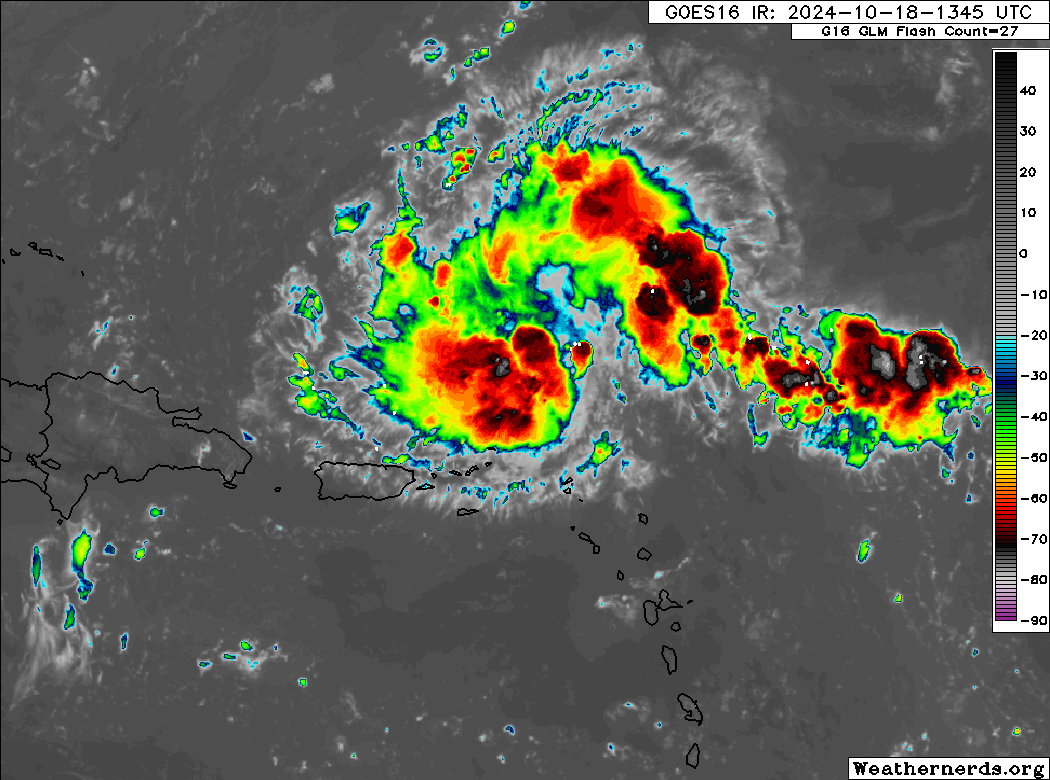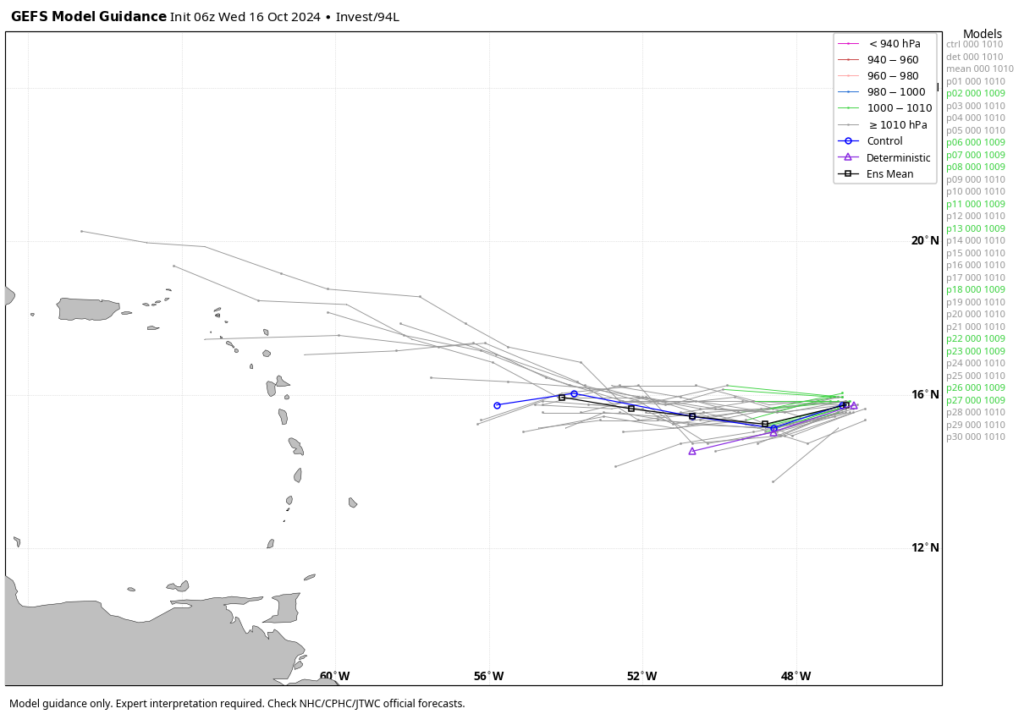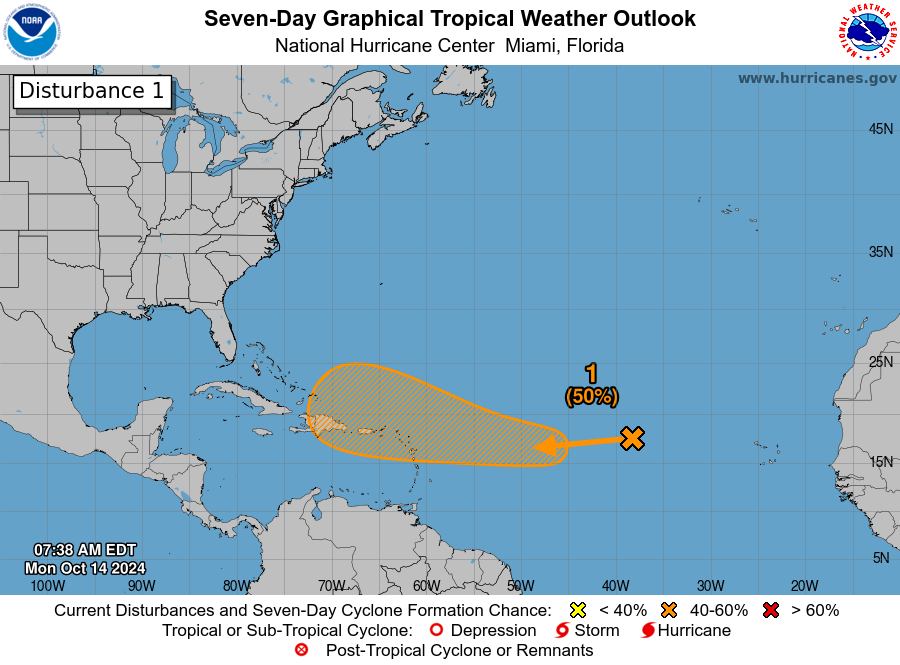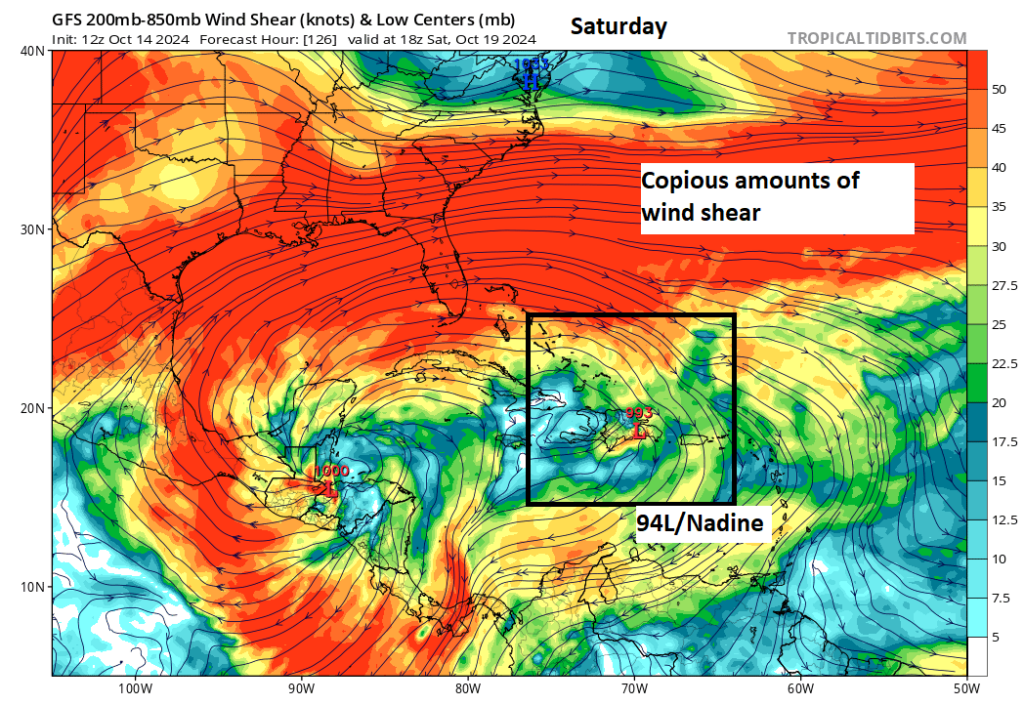Headlines
- Yesterday’s invests are today’s named storms.
- Nadine is moving inland in Central America and Mexico, producing locally heavy rainfall.
- Oscar is a micro hurricane north of Hispaniola bringing rough conditions to the Turks and Caicos Islands and perhaps the southeastern Bahamas and parts of Cuba.
Tropical Storm Nadine
Yesterday we noted that Invest 95L had a shot to become a depression or low-end tropical storm before moving into Central America today. That is indeed what happened, as Tropical Storm Nadine formed from the mess, and it is now moving inland.
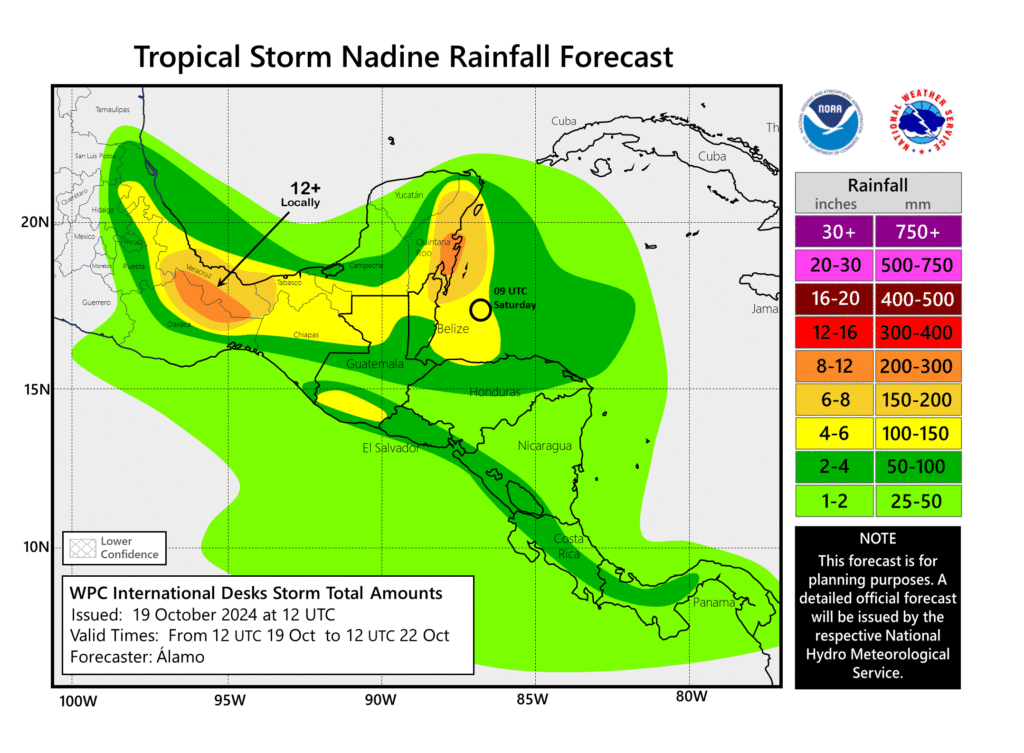
Nadine is primarily a rainmaker, and flash flooding is a good bet for portions of the Yucatan, Belize, and Veracruz and Oaxaca. No further strengthening is expected.
Hurricane Oscar
The Oscar for most surprising storm of the season goes to Oscar! Not only did we get a tropical storm out of Invest 94L, we got Hurricane Oscar.
Hurricane-force winds extend out a total of 5 miles from the center, while tropical storm force winds extend out about 45 miles. Oscar could best be described as a “microcane.” Still, those winds are bearing down on the Turks and Caicos Islands and moving toward the southeastern Bahamas. Widespread tropical storm and isolated hurricane conditions are likely with this as it passes through.

Nothing about Oscar is simple. Storms this small will periodically be big misses in the model world, underscoring the value of reconnaissance flights and other observational tools. Modeling completely whiffed on this yesterday and even up to this morning. This is another post for another day, but thankfully the forecast has been updated, and it now appears we have some solid footing on Oscar for folks in the Turks and Caicos and Bahamas, as well as in Cuba. At this point, no threat to the U.S. is seen, as wind shear is too high just west of here, something that should make Oscar grouchy early next week. Interests in Cuba and the southwest Atlantic should continue monitoring Oscar’s progress.
